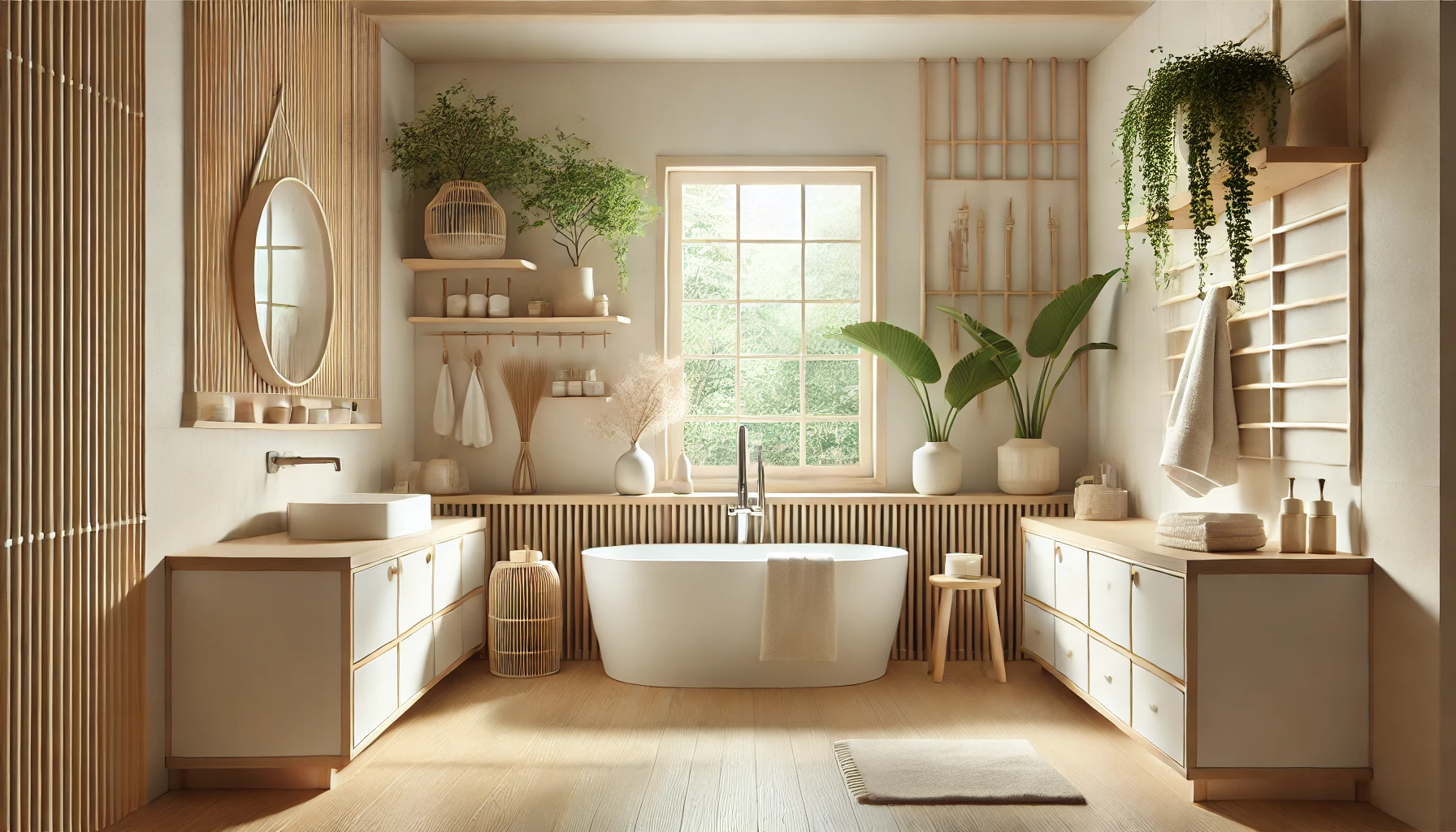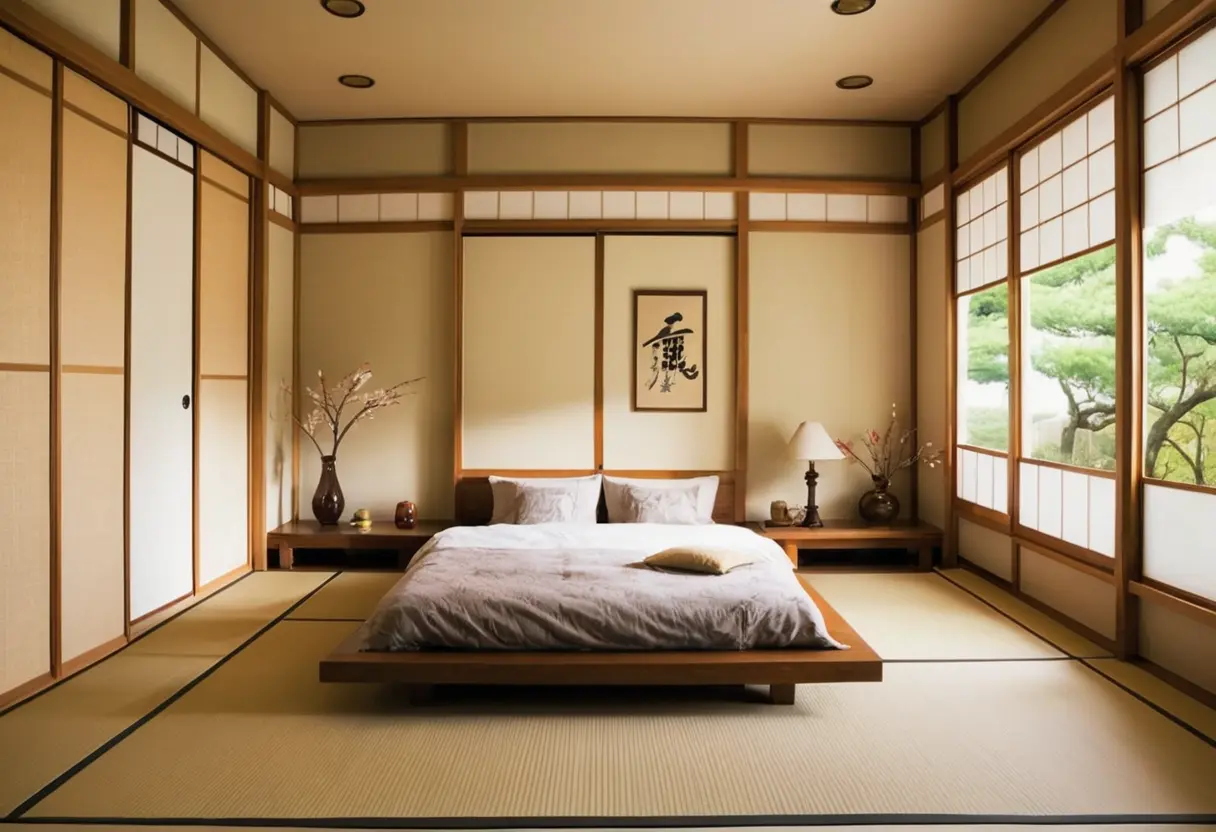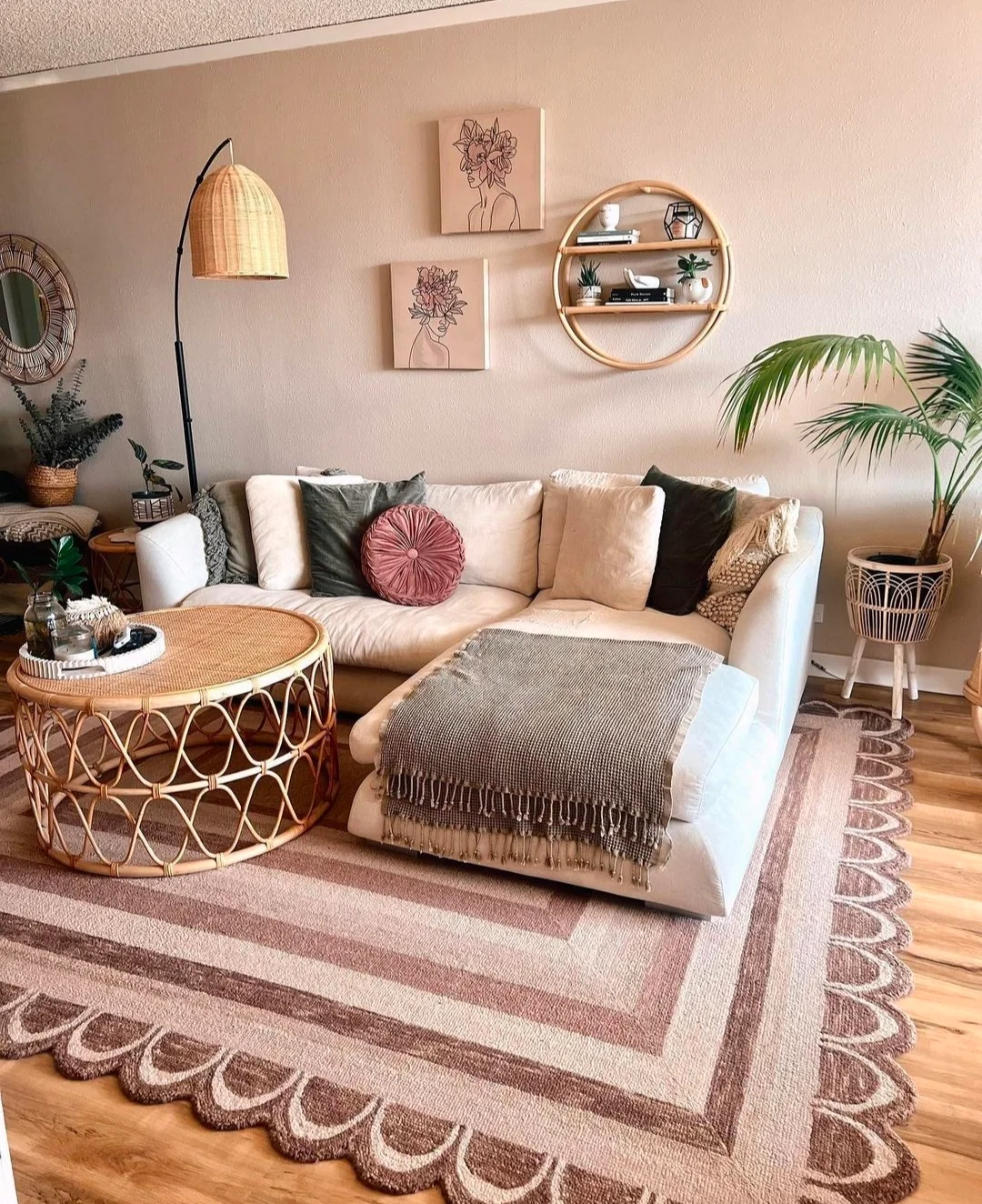33 Inspiring Japandi Bathroom Ideas You Can Try On Weekend
Japandi Bathroom Ideas
Imagine transforming your bathroom into a serene Japandi bathroom in just one weekend—a place where you can start the day fresh and unwind from tiredness in the evening.
Does it sound dreamy? But trust me, it’s possible with simple steps.
Japanese minimalism and Scandinavian coziness combine perfectly in Japandi bathroom design. This hybrid style highlights clean lines, natural materials, and tranquility, creating spaces that feel like a breath of fresh air.
In this article, we’ll explore 30 inspiring Japandi bathroom upgrades you can easily tackle on a weekend. These upgrades will help you create a balanced and elegant retreat without breaking a sweat. Let’s get started!
What is the Meaning of Japandi?
Japandi is a fusion of Japanese and Scandinavian styles. To truly understand this fusion, we need to examine three concepts.
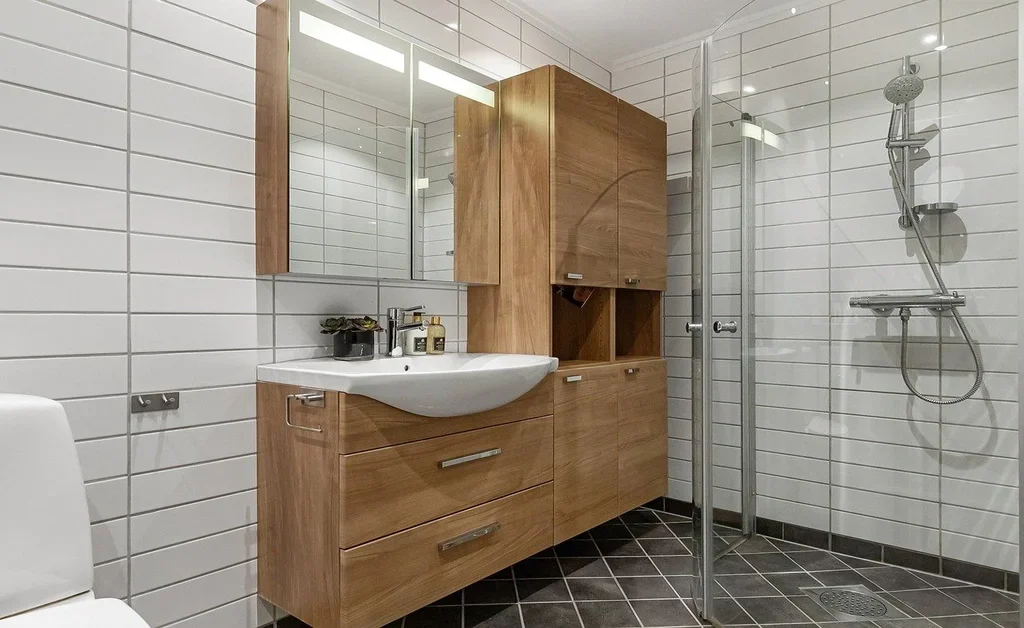
Understand the Japandi aesthetic
- Japandi’s design draws on three key concepts. First is wabi-sabi, a Japanese principle that finds beauty in imperfection and celebrates natural elements like rocks, stone, and wood.
- Second is lagom, a Swedish concept meaning “just enough,” emphasizing simplicity and a clutter-free environment.
- Finally, hygge is a Norwegian/Danish idea that embodies coziness and comfort. It’s the feeling of warmth and contentment, like enjoying a warm bath on a cold day, surrounded by soft lighting and a sense of peace. Together, these ideas shape the balanced, serene atmosphere of Japandi design.
Japandi design merges the best of Japanese minimalism with Scandinavian functionality and warmth. It’s not just about looks—it’s about creating a clutter-free functional space with minimalism.
Japandi Style: Origins + Influences
Japandi style emerged from a shared desire for simplicity and functionality. The clean lines of Japanese design meet Scandinavian homes’ cozy, inviting feel. Natural materials and earthy tones form the base, while both styles focus on decluttered, purposeful spaces.
Over the years, the popularity of this fusion has grown, making it a favorite for modern, mindful interiors.
Distinctive Features of Japandi Style Bathroom
- Simplicity
- Balance
- Its minimalist approach rejects clutter.
- Furniture is low to the ground, giving rooms an open feel.
- Natural materials like wood, stone, and bamboo are staples.
- The style balances light and dark, often pairing light woods with darker accents to create depth.
- Subtle geometric or organic patterns on tiles or textiles can add a touch of detail without overwhelming the space.
- Stick to clean, simple lines, avoiding anything too ornate or decorative.
- Ensure plenty of natural and artificial light maintains the design’s bright, open feel.
Japandi Bathroom Design Ideas and Inspiration for Your Bath Upgrade
Updating your bathroom doesn’t have to be overwhelming. These Japandi-inspired upgrades can be done over a weekend, giving you a space that feels like a sanctuary.
Light and Neutral Color Palette Is a Must
Japandi bathroom design starts with a neutral color scheme. Paint the walls in beige, white, or light gray shades. These tones create a calm, airy atmosphere and make natural elements stand out.
Earthy tones like beige, taupe, and sage green add warmth and simplicity. The main focus is natural, subdued colors that encourage relaxation. Keep the palette subtle for a clean, comfortable look.
Allow Natural Light to Come In
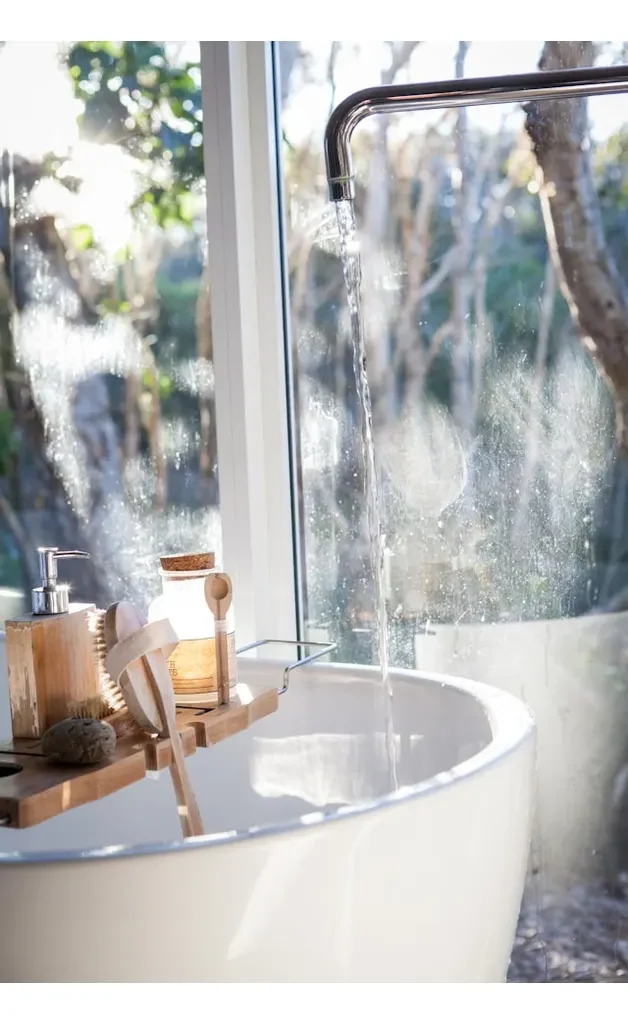
Maximizing natural light is essential for a Japandi bathroom. Use large windows or skylights where possible. Light creates an open, airy feeling, enhancing the space’s calm atmosphere.
Plants/Greenery Is Essential
Plants are a must in a Japandi bathroom. They enhance air quality by releasing oxygen and absorbing toxins and help create a calming atmosphere. Opt for simple, low-maintenance varieties like bamboo or ferns.
Hardy plants like bird’s nest ferns or aloe vera work well in varying bathroom conditions and temperatures, while low-light options like spider plants thrive in dim spaces.
If you are still deciding what plants to use for decoration, some lovely choices complement this style: eucalyptus, bonsais, bamboo, banana leaf trees, olive branch trees, and cherry blossoms.
If you dislike keeping plants in the bathroom or are a minimalist, I suggest you use a vase with bare branches. Opt for accessories like rattan baskets or bamboo holders for a natural touch without plants.
Install Floating Japandi Bathroom Vanity
If you want your Japandi bathroom to feel sleek and contemporary, consider adding a floating vanity. A floating vanity gives your bathroom a modern, spacious look. Choose one with natural wood finishes, which enhances the minimalist, earthy vibe.
Floating vanities are wall-mounted, giving them an open, modern look in contrast to traditional vanities placed on the floor. The space underneath makes the room feel less cluttered and easier to clean.
Add Shower Benches & Stools
Shower stools are just one example of the small things that may provide a sense of luxury and tranquility to a room.
A wooden shower bench or stool will make your bathroom look more spa-like.

In addition to adding a natural element to the Japandi style, it helps sit or store towels. These are also good at improving safety, particularly for people who have trouble moving around or might struggle to stand for long periods in the shower.
Carefully Select Flooring and Tiles
To design an authentic Japandi bathroom, choose wall tiles and flooring that bring warmth. For flooring, use natural stone or large-format tiles.
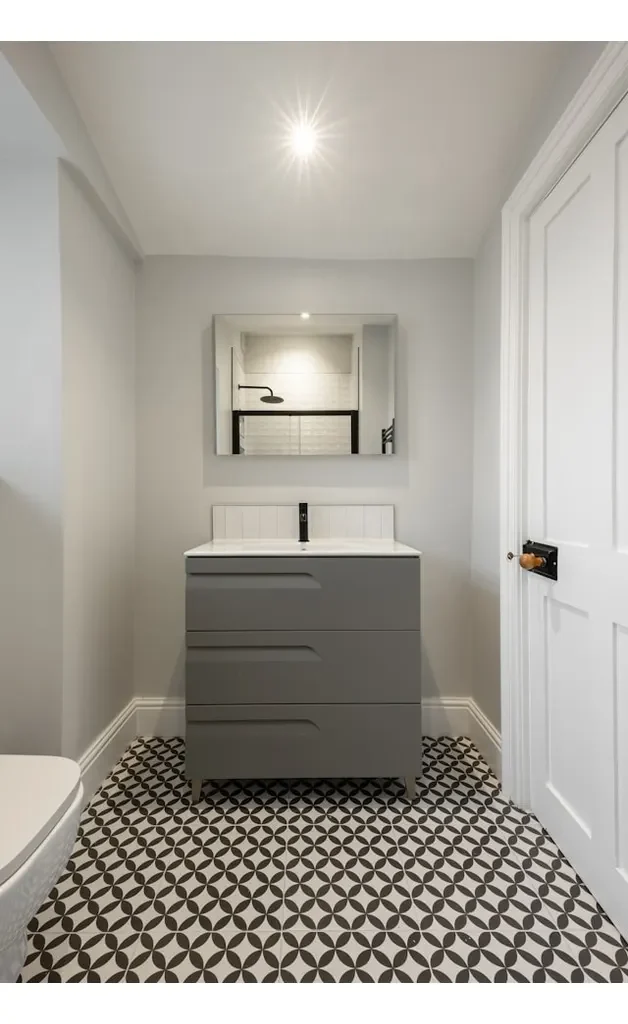
- Keep the color palette neutral, avoiding any overly bright patterns. Earthy tones with matte finishes or stone and wood textures work best.
- Subtle geometric or nature-inspired patterns maintain elegance while keeping the minimalist style intact.
- Porcelain tiles that mimic natural materials offer durability and easy maintenance. For a touch of luxury, opt for tiles with handmade textures or uneven glazes to add unique charm without disrupting the room’s calm feel. Prioritize sturdy, non-slip, and easy-to-clean tiles.
Consider Size and Shape
Stick to simple, clean shapes in everything from your sink to your light fixtures. Avoid overly decorative or intricate designs. Focus on sleek lines and practical forms that contribute to a sense of calm.
Look Out for Tall, Rectangular Mirrors
Another stunning feature of the Japandi bathroom you should take advantage of is adding tall, rectangular mirrors.
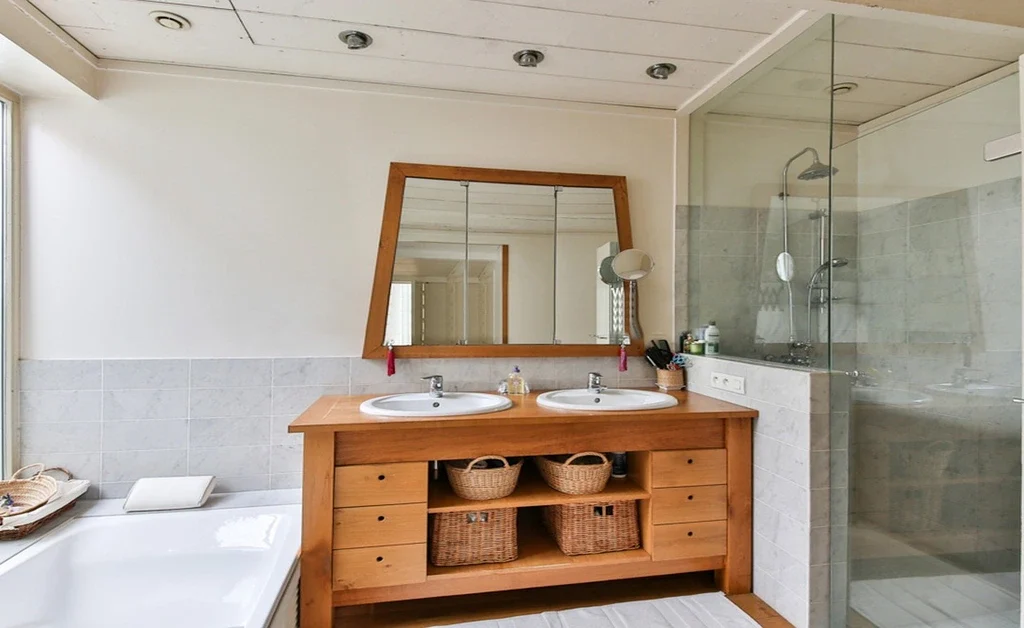
A tall, rectangular mirror enhances the minimalist aesthetic and makes the space feel larger. Go for frameless or light wood-framed designs that maintain a simple and sleek vibe.
Include Bowl Sink
In Japandi-style bathrooms, a bowl sink, sometimes called a vessel sink, is a modern substitute for conventional inset sinks. It adds a contemporary yet natural feel.

The sink is placed on the countertop and looks like a bowl or basin, giving your Japandi bathroom a sleek, trendy look. Its clean, round shape contrasts beautifully with the straight lines of your vanity and countertops, creating visual balance.
Floating Toilet
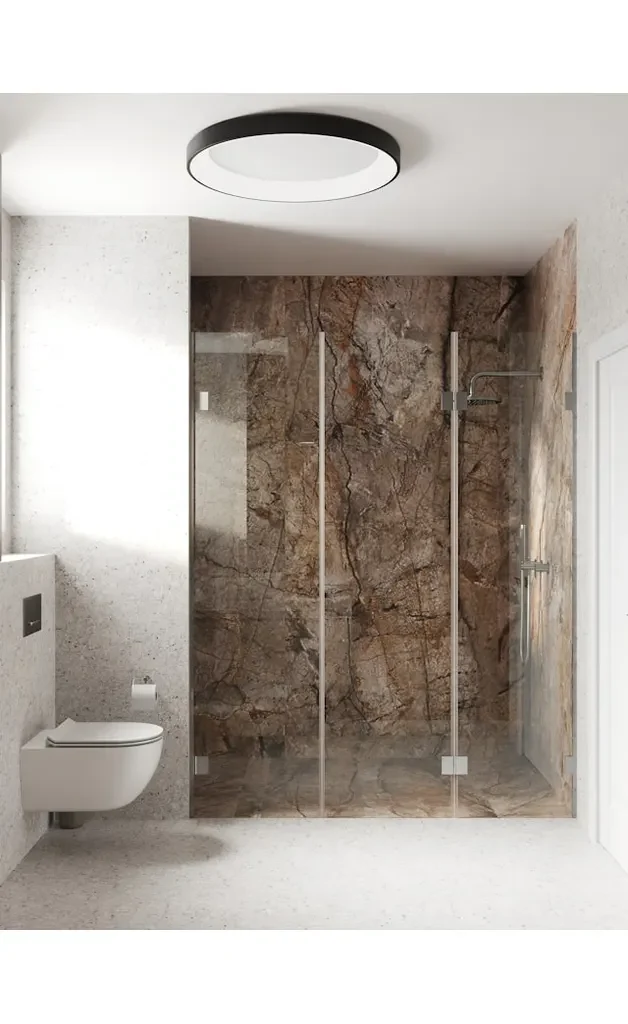
Toilets may not be a bathroom’s most visually appealing part, but a floating design can change that. A floating toilet adds a sleek, modern touch while also making cleaning underneath much more accessible, similar to the benefits of a floating vanity. This design keeps the space looking clean and contemporary.
Freestanding Bathtub
Bathing has long been associated with both physical and spiritual purification in Japan. This tradition makes the bath a focal point in any Japandi bathroom.
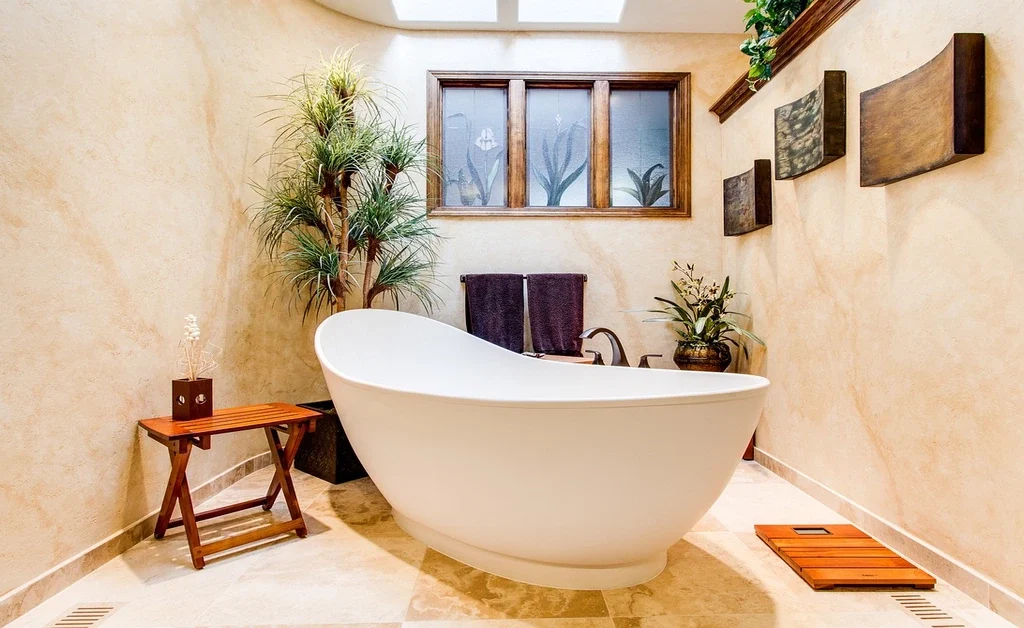
The bathroom’s centerpiece should be a freestanding bath or one against the wall. For smaller bathrooms, the shower can take on this role. Upgrade your bathroom with striking black grid shower panels or a textured shower curtain to add a captivating visual element.
Think of Bamboo
Bamboo is a perfect material for a Japandi bathroom. You can use bamboo for accents, furniture, or decorative elements like towel racks. Bamboo brings a sense of nature indoors.
Dark Accents
Japandi designs primarily focus on light and neutral color palettes, but dark accents often create a striking contrast. This combination adds depth and visual interest, balancing the light, airy feel with a modern touch.
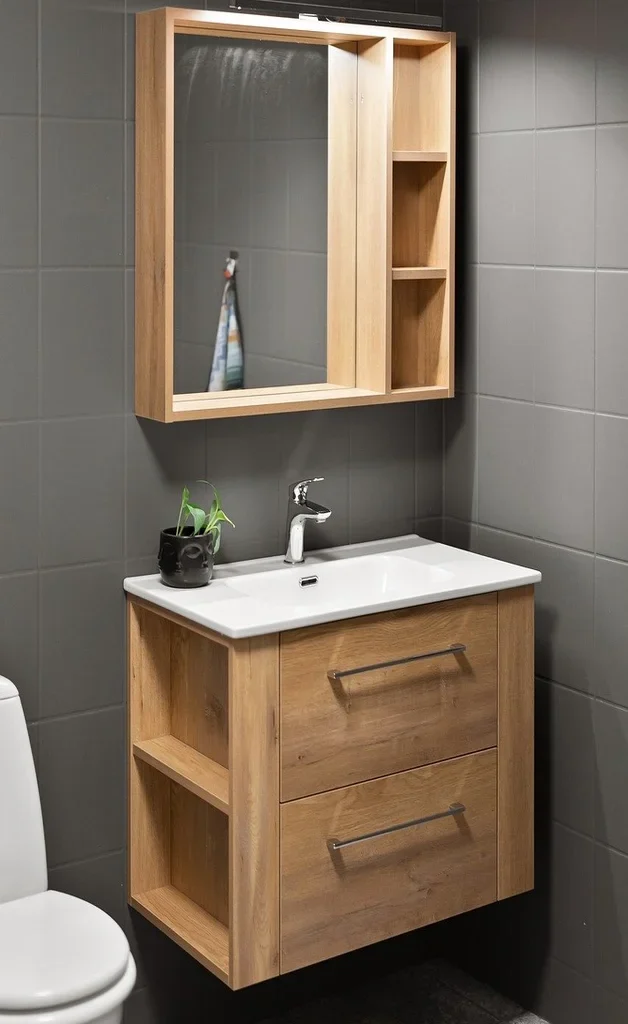
Consider matte black fixtures, dark towels, or a black-framed mirror to break up the room’s light tones. Such combinations add visual appeal without clutter. You can opt for darker charcoal, navy, or brown accents.
Furthermore, you can also use natural hues inspired by wood, stone, and earth to maintain a soothing balance.
Add Wooden Elements / Wood Slat Wall
A Japanese design staple is a wood slat wall that adds fervor and texture to any area. Use light-toned woods like oak or beech.
Made from thin, vertical, or horizontal wooden strips, these wood slats serve as a stunning backdrop for art or shelving and enhance the minimalist elegance of a Japandi bathroom.
Clean Lines Is Japandi Bathroom Signature
Scandinavian and Japanese designs are renowned for their clean lines. To achieve this in a Japandi bathroom, let the room’s natural shapes and lines take center stage.
Focus on creating a seamless flow between surfaces, with walls blending smoothly into ceilings. This approach helps merge separate areas into one unified, open space, enhancing the room’s airy and minimalist feel.
Give Priority to Functional Storage
Functional storage solutions are essential. Built-in shelves, hidden compartments, and minimalist cabinets keep the bathroom looking clean and organized. Everything should have its place to avoid clutter.

Unique Towel Storage
Get creative with towel storage. Wooden ladders or wall-mounted racks can double as functional storage and decor. It’s a simple way to keep your space organized while enhancing the design of the Japandi bathroom.
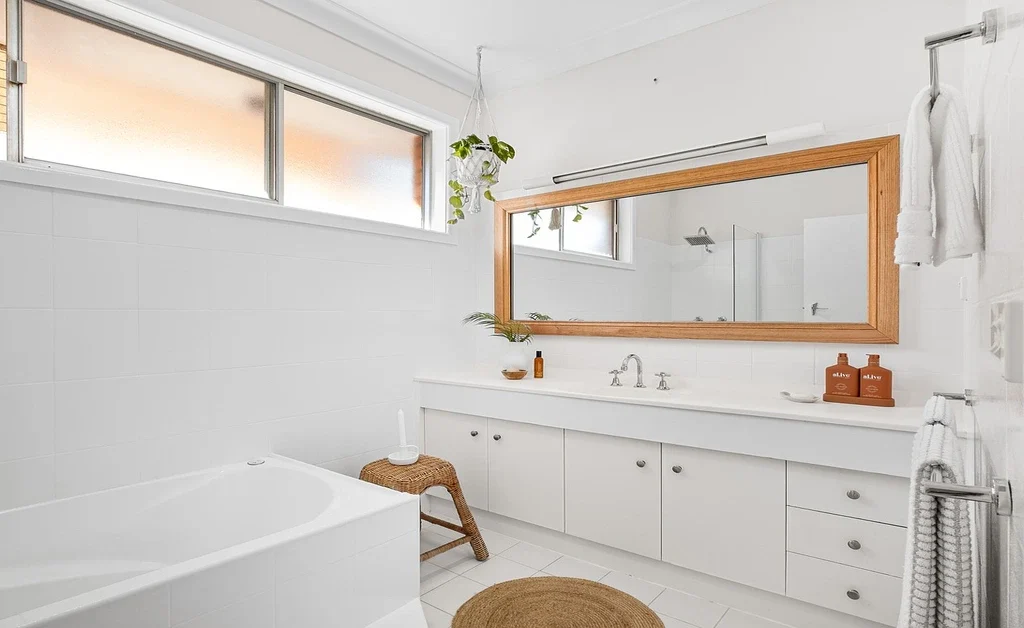
Built-in Wall Storage
Incorporate built-in storage niches into walls. Built-in storage adds functionality without taking up space or disrupting the clean aesthetic. Use these niches to hold bath products or display decorative elements.
Adhere to Japandi Style Minimalist Decor

Keep decor minimal. Choose simple, functional items that enhance the space without cluttering it. A single piece of artwork or a few carefully placed accessories will be enough. Also, stick to minimalist vanities and storage units that don’t dominate.
Add Minimal Handcrafted Items
Handcrafted items bring authenticity to a Japandi bathroom. Choose simple, artisanal pieces like ceramic soap dishes or handwoven baskets to add a personal touch.
Textured Fabrics
For towels and bath mats, include textured fabrics like linen or cotton. These natural materials add warmth and depth while keeping the space soft and inviting.
Mix and Match Contrasting Textures
Combine smooth surfaces with rough textures for visual contrast. This balance of textures adds depth to the space without cluttering the design.
Organic Materials/Organic Shapes
Use organic shapes and materials to soften the design. A round mirror or curvy sink can break up the straight lines, adding a natural flow to the room.
Keep Some Open Spaces
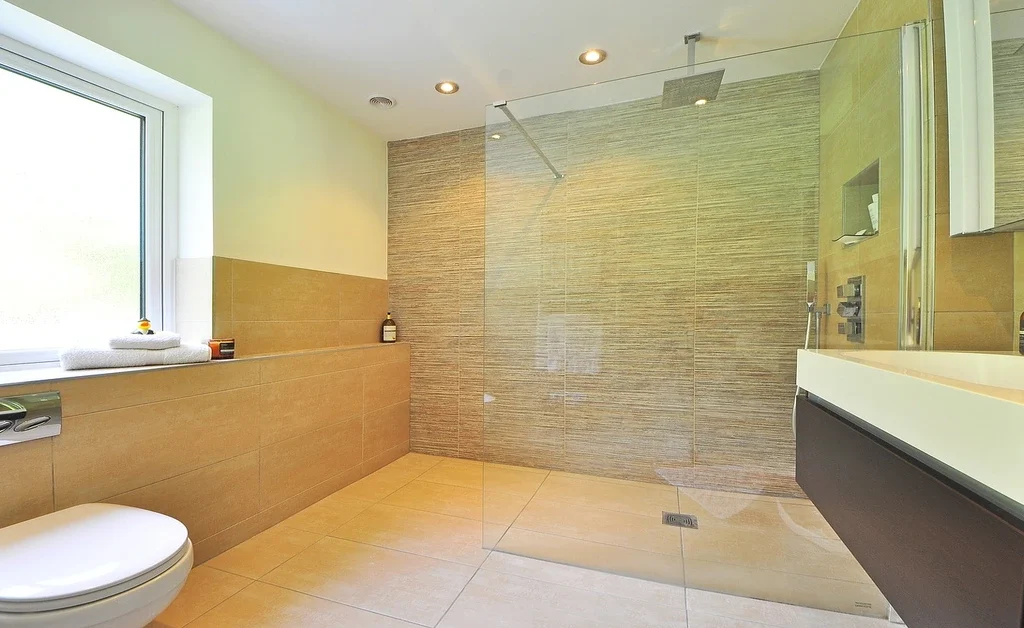
One of the most critical features of the Japandi bathroom is leaving some open space. Don’t overcrowd the room with too much furniture or decor. Let negative space contribute to the overall serenity of the bathroom.
Subtle Patterns
Use subtle patterns to add depth without overwhelming the space. Geometric or nature-inspired patterns on tiles or textiles are great options.
Incorporate Wabi-Sabi Features
Admiring imperfections is a gorgeous element in Japandi interiors. Incorporate wabi-sabi by marking imperfections in natural materials. Use handcrafted items or natural stone to embrace this beauty aesthetic in imperfection.
A Tranquil Zen-like Atmosphere

Focus on creating a Zen-like atmosphere with soft lighting, natural materials, and uncluttered spaces. Every element should promote relaxation and calm.
Maintain a Low Furniture Height
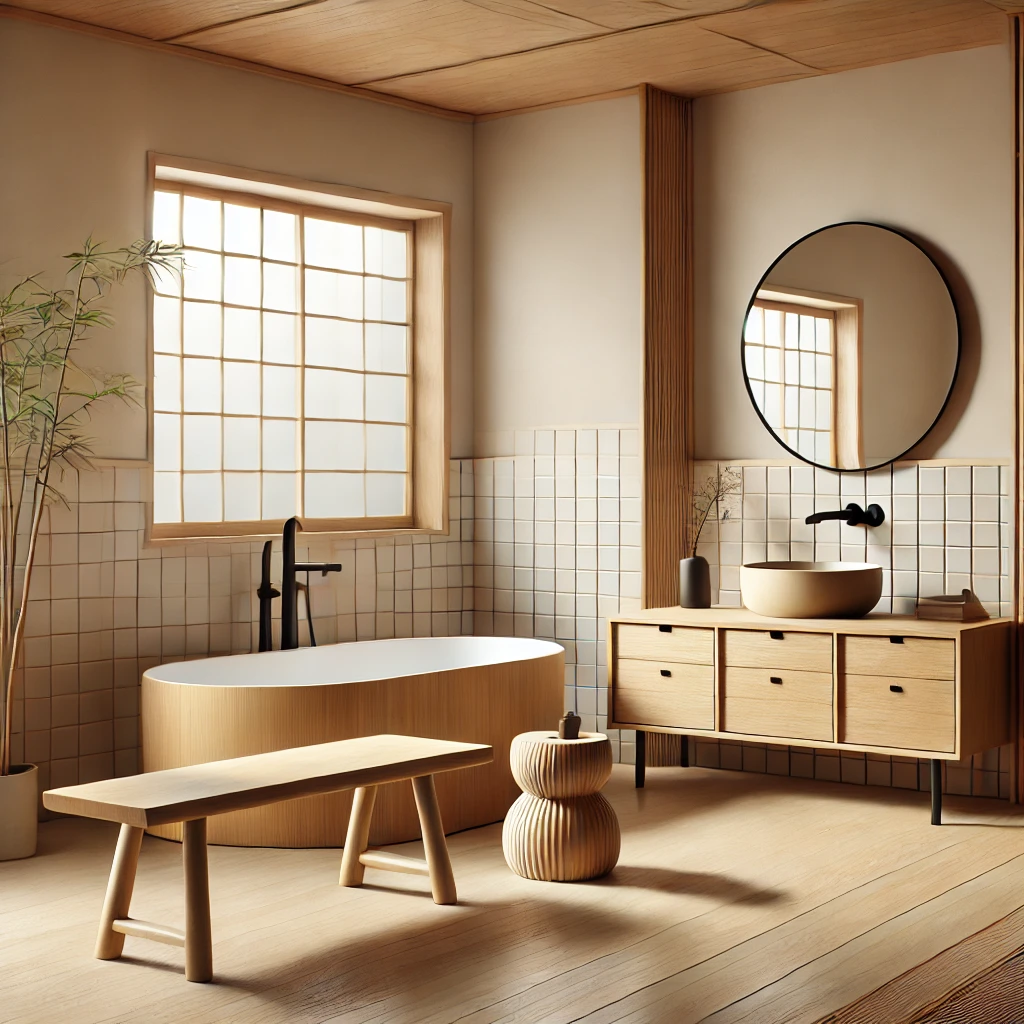
Another striking and essential characteristic of the Japandi bathroom is the low furniture, which promotes better ergonomics and a sleek aesthetic.
Add a low seat with clean lines in front of the vanity for style and comfort. Low-profile furniture keeps the room feeling spacious and open.
Statement Lighting/Soft Lighting
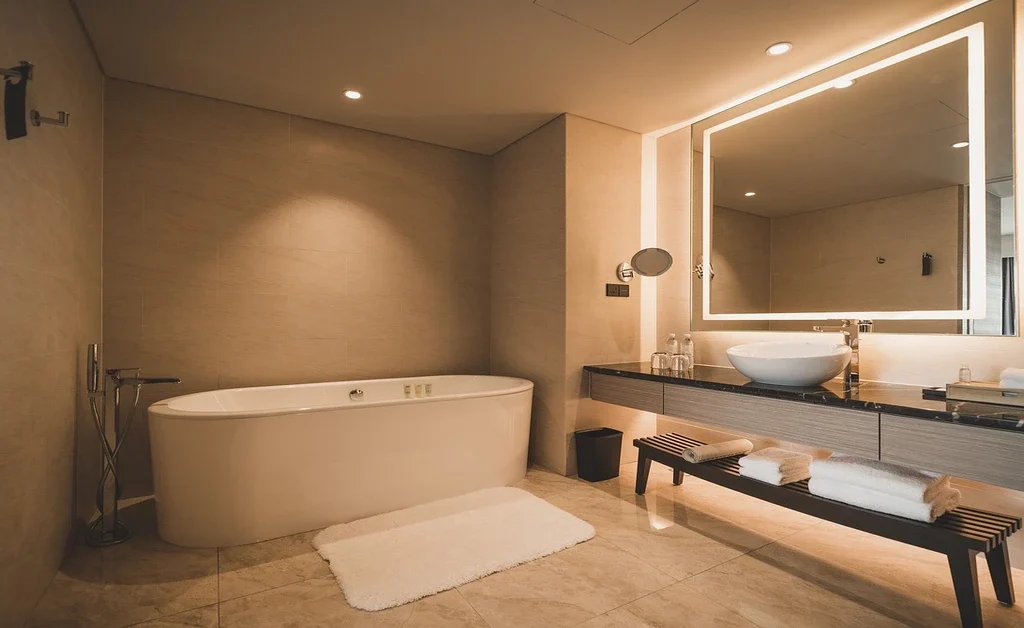
Install statement lighting that’s simple yet impactful. Use soft, warm lighting to create a cozy, inviting atmosphere.
Think About Wall Art
Keep wall art minimal. Opt for simple, nature-inspired pieces that complement the tranquil atmosphere. Avoid anything too bold or complex.
Water Elements
A small water feature, like a fountain or water bowl, can enhance the sense of tranquility in the space. It brings a soothing, natural sound to the bathroom.
Glass Elements
Use glass to maintain an open, airy feel. Frameless glass shower enclosures or glass shelving can add functionality without removing the minimalist look.
Hidden Technology
Japanese bathrooms use hidden technology to keep the space sleek. Smart mirrors, concealed lighting, or touchless faucets can add modern convenience without disrupting the design.
Monochromatic Accents
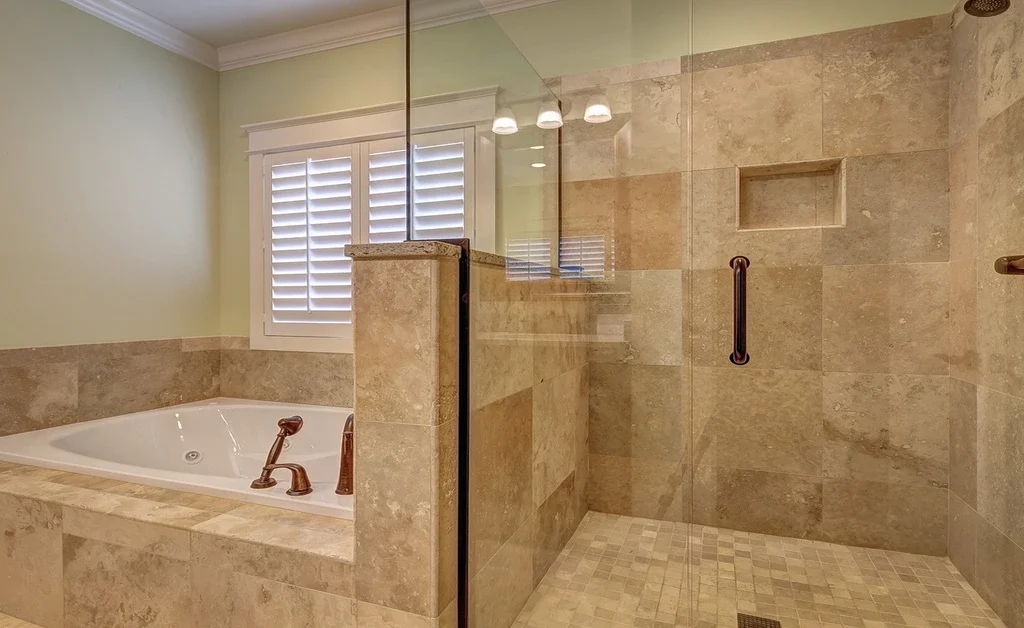
Monochromatic accents add depth and bring cohesion. Stick to a single color scheme for accessories like towels, soap dispensers, or decorative items.
Sustainability
Sustainability is central to the Japandi style, which favors durable, high-quality pieces over disposable items. Materials like bamboo, copper, and natural stone enhance the eco-friendly vibe. Bamboo is particularly effective, offering a calming, spa-like feel.
Accessories such as bamboo mirrors, storage containers, and waffle towels bring a soothing, natural touch to your bathroom. To conserve resources, use water-saving shower heads and regularly check taps and toilets for leaks to reduce water waste. Use eco-friendly materials where possible.
Ceramics and Porcelain
Utilize ceramics and porcelain in fixtures or decor items. These materials blend beauty with functionality, enhancing your bathroom’s overall aesthetic.
What is the Difference Between Scandi and Japandi?
Although simplicity and minimalism are vital components of Scandi and Japandi design, the former frequently includes more aspects of traditional Japanese design, like elaborate patterns and textures. Conversely, Scandinavian kitchens typically have simple designs and little decoration.
Conclusion
Whether aiming for a calming spa-like atmosphere or a sleek, modern aesthetic, Japandi bathrooms can turn an ordinary space into a peaceful haven.
Designing a Japandi bathroom involves thoughtful decisions and prioritizing simplicity, functionality, and a connection to nature. Adopt these suggestions to turn your area into a calm haven to rest and recharge daily.
- Sustainable Home Design Eco-Friendly Materials and Practices - February 10, 2025
- How To Choose Wallpaper For Living Room: Top Tips To Consider - January 1, 2025
- Are Large Tiles Good For Small Bathrooms - December 29, 2024

